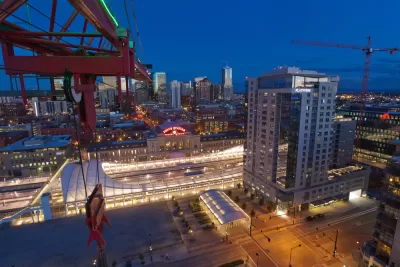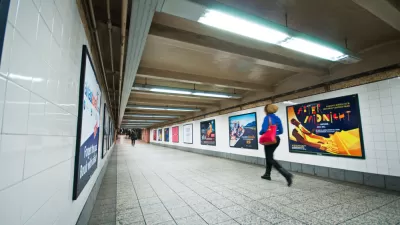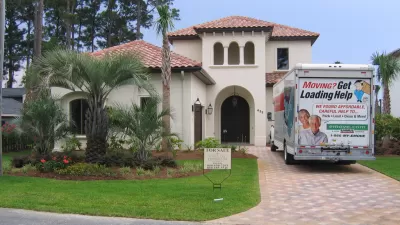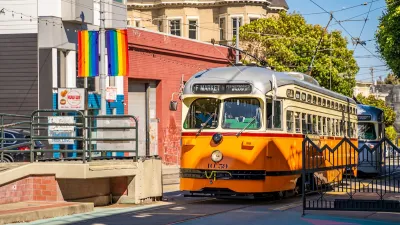A new study, jointly produced by the American Public Transportation Association (APTA) and the National Association of Realtors (NAR), finds evidence of dramatic increases in the value of real estate located proximate to public transit.

"Property values of residential and commercial buildings increase dramatically when located close to transit, according to a joint study from the American Public Transportation Association (APTA) and the National Association of Realtors (NAR)," according to an article by Chris Teale.
Analyzing data from seven metropolitan regions (Boston; Eugene, OR; Hartford, CT; Los Angeles; Minneapolis-St. Paul; Phoenix; and Seattle),
"[t]he associations found that residential properties within a half-mile of public transit options (heavy rail, light rail, commuter rail and bus rapid transit) had a 4%-24% higher median sale price between 2012 and 2016." Similarly located commercial properties also gained value during the same time period.
Another key finding of the study pertained to the savings of residents who live near transit.
Now the question is how effective cities will be leveraging that knowledge to mitigate ongoing crises of climate change and housing affordability.
FULL STORY: Property values 'thrive' near transit, study finds

Americans May Be Stuck — But Why?
Americans are moving a lot less than they once did, and that is a problem. While Yoni Applebaum, in his highly-publicized article Stuck, gets the reasons badly wrong, it's still important to ask: why are we moving so much less than before?

Using Old Oil and Gas Wells for Green Energy Storage
Penn State researchers have found that repurposing abandoned oil and gas wells for geothermal-assisted compressed-air energy storage can boost efficiency, reduce environmental risks, and support clean energy and job transitions.

Placekeeping: Setting a New Precedent for City Planners
How a preservation-based approach to redevelopment and urban design can prevent displacement and honor legacy communities.

San Francisco’s Muni Ridership Grew in 2024
The system saw its highest ridership since before the Covid-19 pandemic, but faces a severe budget shortage in the coming year.

Colorado Lawmakers Move to Protect BRT Funding
In the face of potential federal funding cuts, CDOT leaders reasserted their commitment to planned bus rapid transit projects.

Safe Streets Funding in Jeopardy
The Trump administration is specifically targeting bike infrastructure and other road safety projects in its funding cuts.
Urban Design for Planners 1: Software Tools
This six-course series explores essential urban design concepts using open source software and equips planners with the tools they need to participate fully in the urban design process.
Planning for Universal Design
Learn the tools for implementing Universal Design in planning regulations.
Heyer Gruel & Associates PA
City of Moreno Valley
Institute for Housing and Urban Development Studies (IHS)
City of Grandview
Harvard GSD Executive Education
Salt Lake City
NYU Wagner Graduate School of Public Service
City of Cambridge, Maryland





























